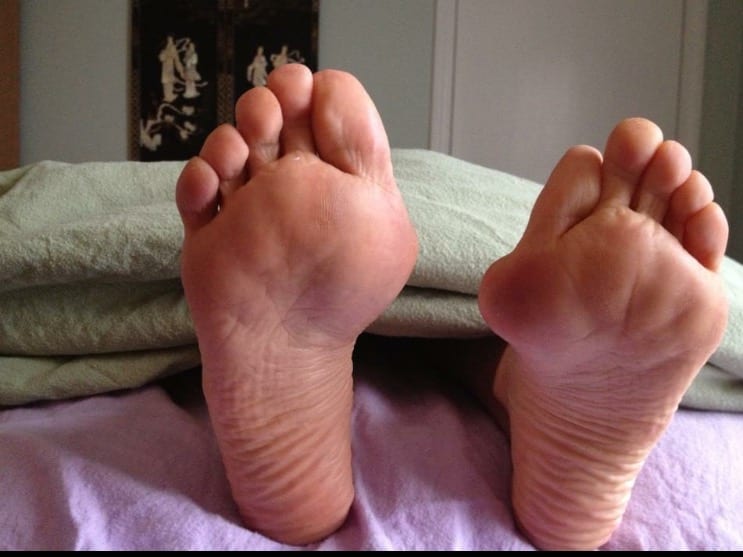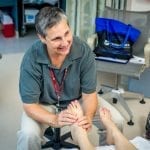Complications due to diabetes are the number-one cause of lower-leg amputations and account for nearly 86,000 amputations per year. Doctors estimate almost 50 percent of these amputations could have been prevented if the person had taken better care of their feet.
“I can’t emphasize enough how important it is for a person with diabetes to pay rigorous attention to their feet. Foot infections are the most common issue for a person with diabetes and are more severe and take longer to heal than in a person without diabetes,” says Dr. Alan Farber, a certified doctor of podiatric medicine.
Farber added, “Proper foot care is simple and includes things like using an antifungal daily, not only to heal, but also to prevent fungal infections, and using a moisturizer daily to heal and prevent dry, cracked skin.”
Are you being thorough enough in your foot care?
- Whether indoors on plush rugs or outdoors on white sand, never walk barefoot. Podiatrists recommend wide, closed-toed shoes with socks that fit very well. Shoes should not require “breaking in.”
- Clean feet daily with warm water and mild soap, but don’t soak them for more than three or four minutes. Skin submerged for too long will become macerated and more vulnerable to bacteria.
- Cracks in dry skin provide ideal openings for bacteria. Look for moisturizing creams containing L-Arginine, like DiabetiDerm Foot Rejuvenating Cream. L-Arginine helps stimulate healthy blood flow to heal dry, cracked skin. This special cream is available only in the diabetic section of your favorite drugstore or superstore.
- Under no circumstances should you shave or attempt to remove calluses or corns. Instead, show them to your podiatrist and ask about specially prescribed shoes. Even before your appointment, buy a cream made especially for people with diabetes that specifies it helps soften calluses, and apply it every day.
- Meticulously inspect feet, toes and toenails for swelling, cuts, blisters, redness, fungal buildup or any type of irritation on a daily basis. If you have thickened toenails, have a podiatrist test for fungus. If fungus is present, an antifungal will likely be recommended like DiabetiDerm Antifungal Cream with L-Arginine in the diabetic section. L-Arginine helps stimulate blood flow, which in turn speeds healing.
Source: USNews and World Report
If you would like to know how Reflexology to help find relief from feet discomfort due to diabetes, please feel free to contact the Healing Place to schedule a FREE consultation either online or call at 508 359-6463.
For the Healing Place Medfield’s free report “Proven Alternative Ways to Heal Common Chronic Digestive Problems: What Your Doctor Doesn’t Know Can Keep You From Healing” click here.








 The Healing Place LLC helps all ages to find relief from chronic pain, chronic digestive problems and balance hormones naturally. We practice COVID19 safety. Don’t forget to check on our online school HealingPlaceEnergySchool.com. Thank you.
The Healing Place LLC helps all ages to find relief from chronic pain, chronic digestive problems and balance hormones naturally. We practice COVID19 safety. Don’t forget to check on our online school HealingPlaceEnergySchool.com. Thank you.
Recent Comments